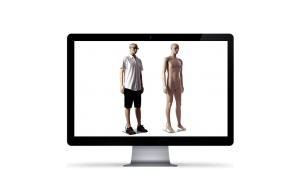SOLAR SHIELD 2017 NWO Food Shortage Plan has begun
Overarching goals
Produce research that advances solar geoengineering’s science and technology frontier, publishing high-impact papers, and disseminating ideas that are taken up by other researchers and government research programs.
Take an active stance on research with a unique mandate to develop new path-breaking technologies that might improve solar geoengineering’s effectiveness and reduce its risks.
Employ Harvard’s convening power to bring together scientists, environmental leaders, and government officials to discuss the technology and its governance.
Advance science and technology, assess efficacy and risks, and lay out governance options and social implications.
Track 1: Advancing Science and Technology
Harvard’s Solar Geoengineering Research Program will develop methods that might reduce the risks and improve the efficacy of solar geoengineering when compared to the injection of sulfates into the stratosphere, which has been the standard proposal since the 1970s. Specific examples include:
- Develop novel solid aerosols that might:
- reduce or even reverse ozone loss by neutralizing stratospheric chlorine,
- have optical properties that greatly reduce stratospheric heating compared to sulfate aerosol.
- Develop methods to accurately estimate the radiative forcing from solar geoengineering using existing observing systems and, where appropriate, perform conceptual development of new observing systems.
- Develop field experiments that could enable in situ tests of chemistry and aerosol dynamics.
Track 2: Assessing Efficacy and Risks
Harvard’s Solar Geoengineering Research Program will devote most of its effort to scientific research to improve the understanding of the risks of solar geoengineering (e.g., health impacts) and of its efficacy in reducing climate risks (e.g., reducing sea level rise or extreme events). Specific examples include:
- Understand the interaction of solar geoengineering with the carbon cycle.
- Understand historical analogs such as the impact of volcanic eruptions on extreme precipitation or on the mass-balance of the Greenland icecap.
- Understand the environmental risks that arise once materials are introduced into the stratosphere descend into the lower atmosphere.
- Understand the extent to which solar geoengineering reduces extreme temperatures and to quantify the resulting health and welfare benefits.
Track 3: Laying out Governance Options and Social Implications
The largest challenge for solar geoengineering is not the technology itself, but rather the governance of its testing and possible deployment in a divided, multipolar world. Hargard’s Solar Geoengineering Research Program will support a diverse range of research in the social sciences. Examples include:
- Research public perceptions and risk attitudes; e.g., use survey methods to explore how knowledge about solar geoengineering influences people’s willingness to commit to emissions reduction.
- Address concerns that solar geoengineering could reduce incentives to mitigate; e.g., explore the possibility of novel “Climate Clubs,” in which a coalition of nations requires members to commit to major emissions reductions as a condition of participating in the decision-making process regarding whether and how much solar geoengineering should be deployed.
- Fund at least two country studies to engage scientists and decision-makers in the Philippines and one other developing country in research on the risks, benefits, and governance of solar geoengineering.
Crosscutting principles
Open access: Full transparency with open-access publications and liberal data sharing. Discourage patents and any form of IP protection.
Collaborative: Work with researchers within Harvard and across the world. Continue the successful visiting scholars program that facilitates outside collaborators, and encourage SGRP researchers to spend time abroad.
Public Engagement: Inform the public in ways that empowers citizens to engage in the discussion around solar geoengineering.
Policy-relevant: Actively work on policy-relevant research questions and then ‘translate’ the resulting research into publicly accessible documents.









Leave a Comment
You must be logged in to post a comment.